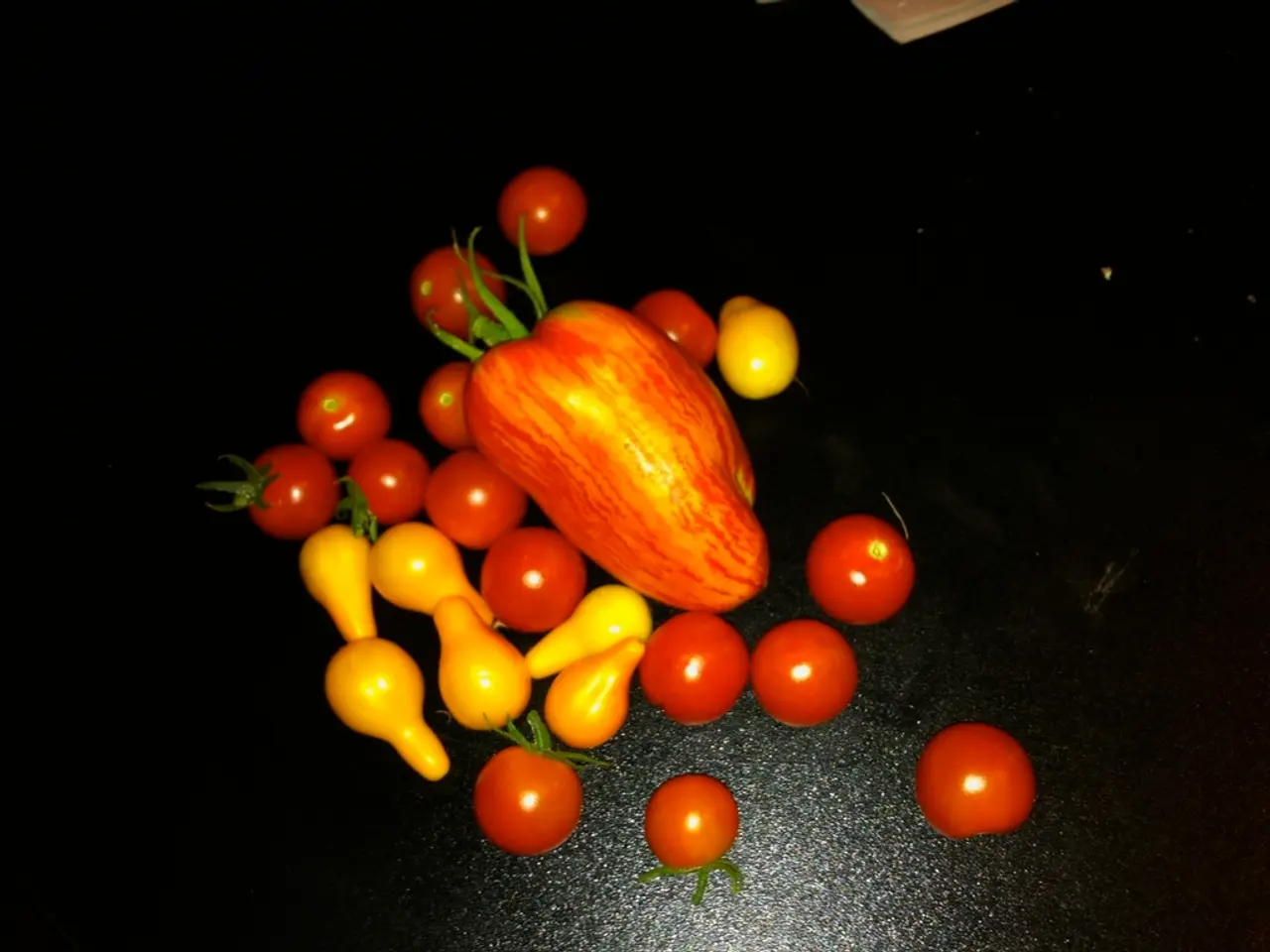Fruits with Highest Sugar Content: An Investigation
In the world of nature's bounty, fruits are often referred to as "nature's candy" due to their sweet taste. However, it's essential to understand the sugar content of various fruits to maintain a balanced diet.
Apples, bananas, cherries, and grapes are all sweet treats in their own right. One cup of pineapple chunks contains 16.3 grams of sugar, equivalent to a slice of cherry pie, while one cup of cherries holds 19.7 grams, similar to a regular-sized Snickers bar. Grapes, being easy to eat, contain 14.9 grams of sugar per cup, akin to a slice of angel food cake.
Mangoes, a tropical fruit, typically have higher sugar levels. A single mango contains 46 grams of sugar, equivalent to eating 50 pieces of candy corn. However, pairing a mango with a protein such as low-fat Greek yogurt can help slow the release of sugar into the blood.
Pears share a similar sugar story with apples, but eating a whole fruit is beneficial. Canned pears packed in sugary syrup can negate some positives and drive up sugar content. A large apple contains 25.1 grams of sugar, equivalent to a Hershey's milk chocolate bar, while a medium pear holds 17.4 grams, similar to a large cinnamon roll.
Bananas, with 15.4 grams of sugar, are comparable to a glazed donut. Watermelon, despite its high sugar content, is low in carbohydrates, making it a refreshing summer treat that won't send your blood sugar levels skyrocketing.
The U.S. Department of Agriculture recommends eating about 2 cups of fruit per day. While fruits can be relatively high in natural sugars, they provide essential nutrients and fiber absent in processed sugary snacks.
It's important to note that most of the sugar in apples is fructose, a "fruit sugar" that doesn't cause blood sugar or insulin levels to spike as much as other sugars. Green apples typically have less sugar than red-colored varieties.
Portion control is key when eating a mango to minimize sugar intake, and moderation is advised when consuming pineapple to avoid a sugar rush. The fiber content in apples helps with glucose metabolism, which can help keep blood sugar and insulin levels from jumping too much.
In terms of sugar equivalences to popular treats, a mango (100g) with 11 grams of sugar roughly equals about 2.75 teaspoons of sugar, comparable to a small candy bar or about half a can of soda in sugar content. A banana (100g) with 9 grams of sugar is roughly 2.25 teaspoons of sugar, similar to the sugar in a small chocolate bar. Grapes (7 g sugar per 100 g) roughly equal 1.75 teaspoons, close to the sugar content of a small cookie.
While dates, plums, and grapes are high in sugar, they still offer essential nutrients. Dates, in particular, should be enjoyed in moderation due to their very high sugar content.
In conclusion, while fruits are sweet and delicious, it's essential to be mindful of portion sizes and enjoy them as part of a balanced diet. By understanding the sugar content of various fruits, we can make informed choices and reap the benefits of these nutrient-rich treats.
[1] Fruit Sugar Content: A Comprehensive Guide. (2021). Retrieved from [https://www.healthline.com/nutrition/fruit-sugar-content] [2] The Truth About Sugar: Natural vs. Added. (2020). Retrieved from [https://www.mayoclinic.org/healthy-lifestyle/nutrition-and-healthy-eating/in-depth/sugar/art-20048389] [3] Moderation is Key: Understanding the Sugar in Dates. (2019). Retrieved from [https://www.healthline.com/nutrition/dates-sugar]
- News articles have highlighted the sugar content in various fruits, comparing them to popular treats like cherry pie, Snickers bars, and cinnamon rolls.
- Fruits like mangoes, apples, and pineapple are high in natural sugars, making portion control important for maintaining a balanced diet.
- Green apples contain less sugar than red-colored varieties, with about 2.25 teaspoons of sugar found in a banana (100g), similar to the sugar content of a small chocolate bar.
- Understanding the sugar content of different fruits, as presented in resources such as Fruit Sugar Content: A Comprehensive Guide (2021), can help individuals make informed choices and reap the benefits of these nutrient-rich treats.
- In the world of health-and-wellness and fitness-and-exercise, it's crucial to consume essential nutrients like those found in fruits, balancing them with moderation to avoid sugar excess.
- While dates, plums, and grapes are high in sugar, they still offer important nutrients and should be enjoyed as part of a broader global-cuisines approach to cooking and a healthy lifestyle.





